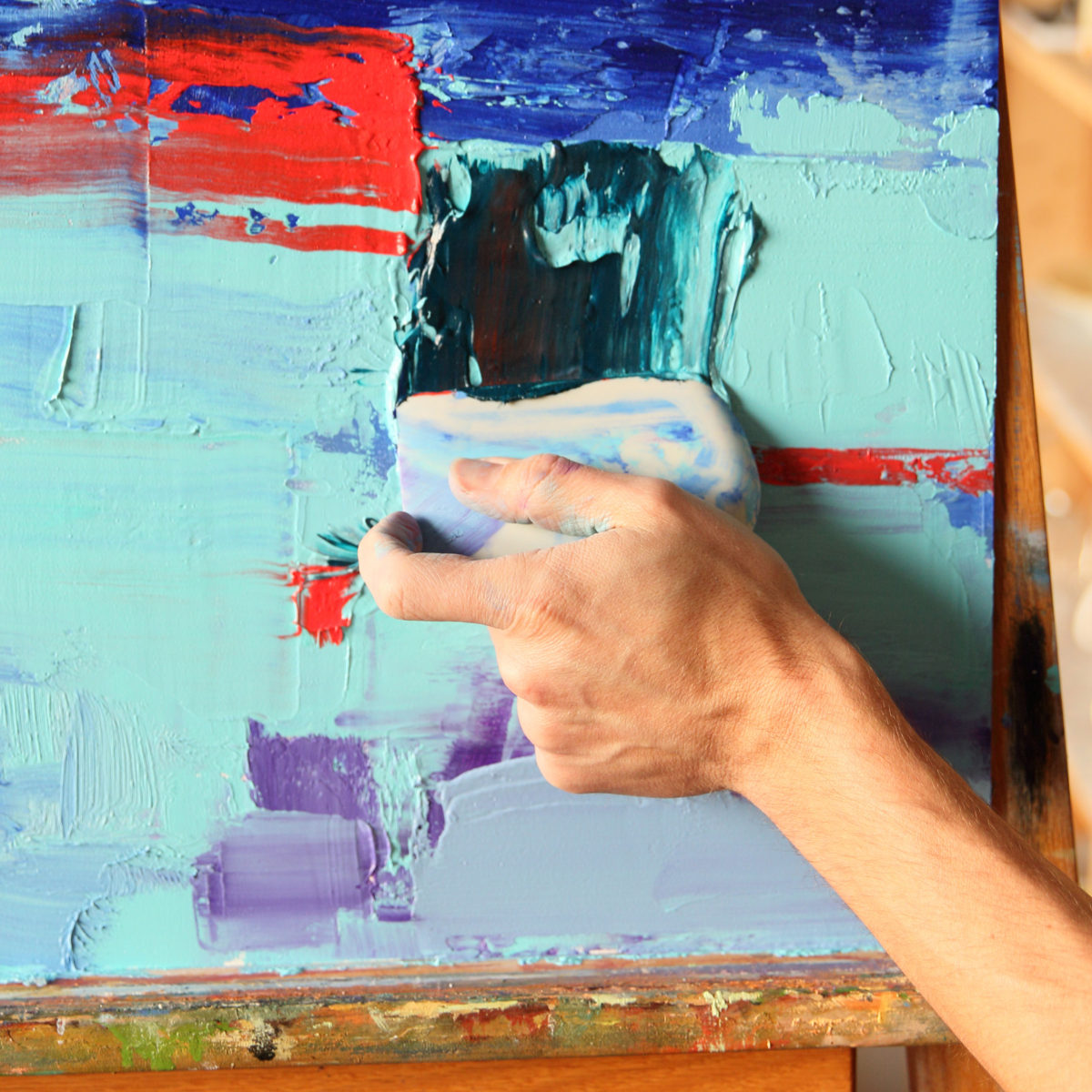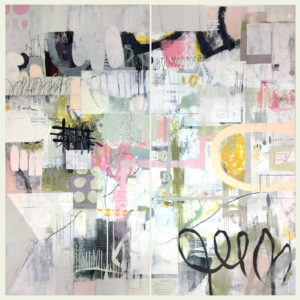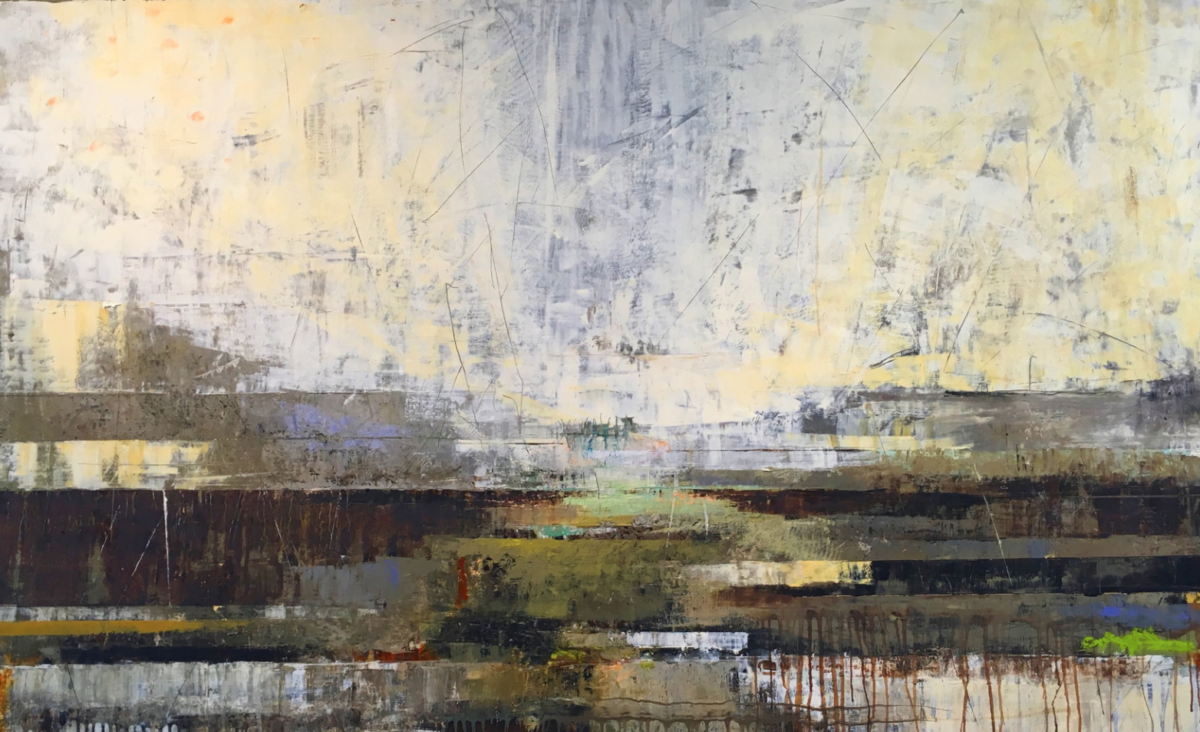Cold Wax Painting
It’s a rare occurrence for one specific painting medium to have a whole genre of painting associated with it, but Cold Wax Medium is one such medium. Cold Wax Painting is not defined by subject matter nor the degree of realism or abstraction, Cold Wax Painting is unified by artists’ shared interest in experimentation, texture and the physicality of paint layers.
Cold Wax Painting is any type of painting that heavily utilizes Cold Wax Medium into oil colors. In its own way, Cold Wax Painting blurs the line between oil painting and encaustic painting.
Cold Wax medium is a dense paste, it is excellent in creating a variety of textures within a painting. It has a “short” characteristic and gives a clean break off of the brush or knife, retaining the sharp peaks of impasto.
These working properties allow for expressive brushmarks and the ability to carve into paint layers with palette knives. Cold Wax also gives oil colors a beautiful translucent quality, similar to the seductive surfaces of encaustic paintings. Cold Wax Painting utilizes experimental approaches, including the use of brayers, stencils, and textural elements such as bubble wrap or wire screens. The possibilities are endless!
What is Cold Wax Medium?
Gamblin Cold Wax Medium a mixture of natural beeswax (wax pastilles), Gamsol and a small amount of alkyd resin. The term “cold” in Cold Wax Medium and Cold Wax Painting refers to the fact that heat is not required for working with this wax medium – as it dries by solvent evaporation (Gamsol), rather than the cooling of the wax, as in encaustic painting. As the Gamsol evaporates out of the medium, the soft wax hardens to the density of a beeswax candle.
Unlike other Gamblin painting mediums, which increase the flow and gloss of oil colors to varying degrees, Cold Wax Medium makes oil colors thicker and more matte.
Compatibility
Cold Wax Medium is compatible with oil colors, alkyd/oil colors, alkyd-based painting mediums, and Gamsol. Fast-drying mediums such as Galkyd and Galkyd Gel will increase the tack when mixed with Cold Wax Medium. Galkyd Lite Gel, our silky, soft gel medium gives the wax a smoother feel and will round the peaks of impasto. These alkyd mediums will increase the gloss level of Cold Wax (just as adding Cold Wax lowers the gloss level of these mediums). Adding Gamsol to Cold Wax Medium will make it more fluid without adding gloss.
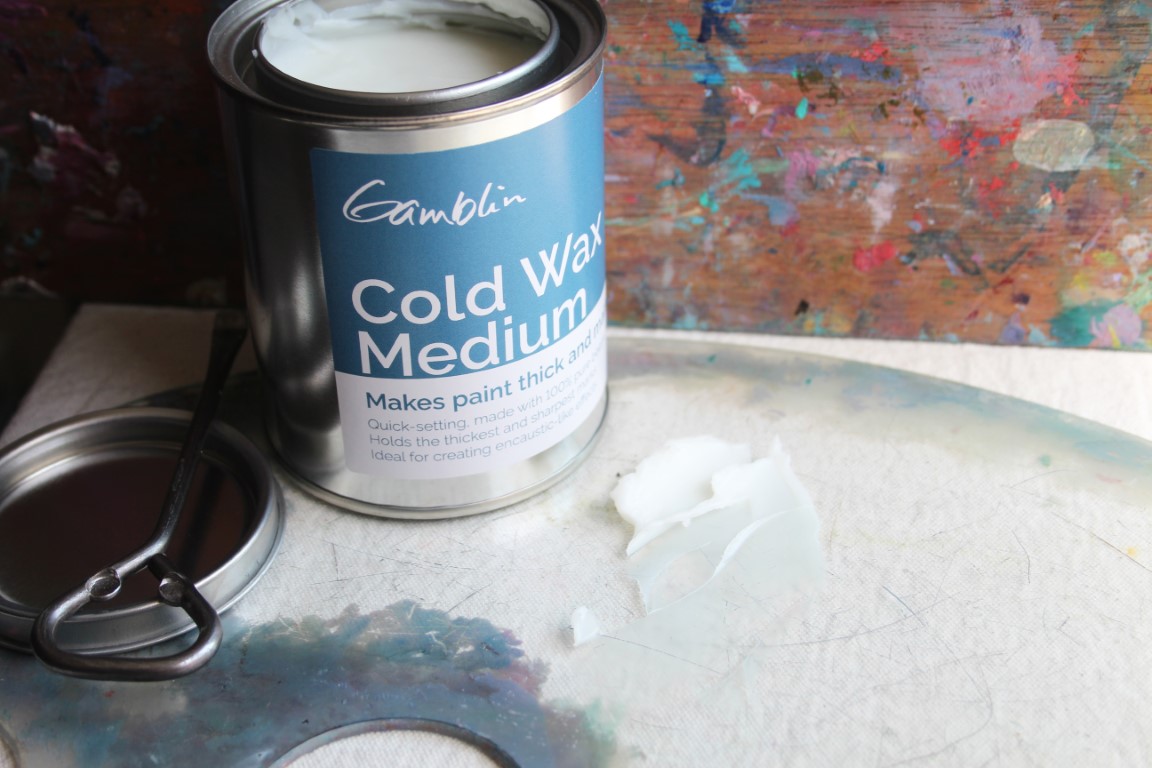
Best Practices – FAQ about Cold Wax Medium
How much Cold Wax Medium can be safely added to oil colors?
We recommend adding up to 1/3 Cold Wax Medium to 2/3 oil colors. Beyond this amount, approximately 25% Solvent-Free Gel, Galkyd Gel or Galkyd Lite Gel could be added to 75% Cold Wax Medium. The addition of these mediums will maintain the body of your wax while also increasing both the flexibility and durability of the resulting paint layer, making it less prone to cracking. For more fluid results, you could alternatively add 25% Galkyd, Galkyd Lite or Solvent-Free Fluid.
What is the best support to paint on for Cold Wax Painting?
Just like encaustic paintings are done on rigid supports such as panels, we recommend the same for Cold Wax Paintings. Wood or aluminum panels are appropriate, as are panels with fabric adhered to the surface. Rigid supports limit movement the paint layers and will help prevent cracking.
When using Cold Wax Medium alone as a painting medium on stretched canvas, we recommend limiting the wax to 1/3 of the total paint mixture. To use higher percentages of Cold Wax Medium on stretched canvas, add 25-50% Galkyd Gel, Solvent-Free Gel, or for more fluid results, Galkyd. The addition of these mediums will increase the flexibility and durability of the resulting paint layer, making it less prone to cracking.
Are Cold Wax paintings subject to melting because of the wax?
The wax we use to formulate the Cold Wax Medium has a melting point of approximately 155 degrees F. In most environments, Cold Wax paintings will remain quite stable. However, if you need to transport or ship the painting through a warm climate in the summer, consider air conditioning!
Can Cold Wax be used as a varnish?
Yes! We have more information on this topic, please see our Tips & Techniques Varnishing with Cold Wax article.
Cold Wax Artists
We’ve been fortunate to work with some wonderful artists who explore Cold Wax Painting techniques in their work. Whether these artists are working in representational or abstract modes of painting, they all utilize Cold Wax Medium for its unique working properties its effects on the resulting paint layers.

These pieces are layered with cold wax, oil paint, gypsum, cement, plaster, acrylics and occasionally watercolor. All the works are developed with putty knives, there is not a single brushstroke, My process is centered around experimentation; I never know how a piece will develop when I begin. I often stop, scratch away sections, and reapply layers of different mediums. I know a work is complete when it evokes a connection—something in the final result invites you to observe and engage with it.
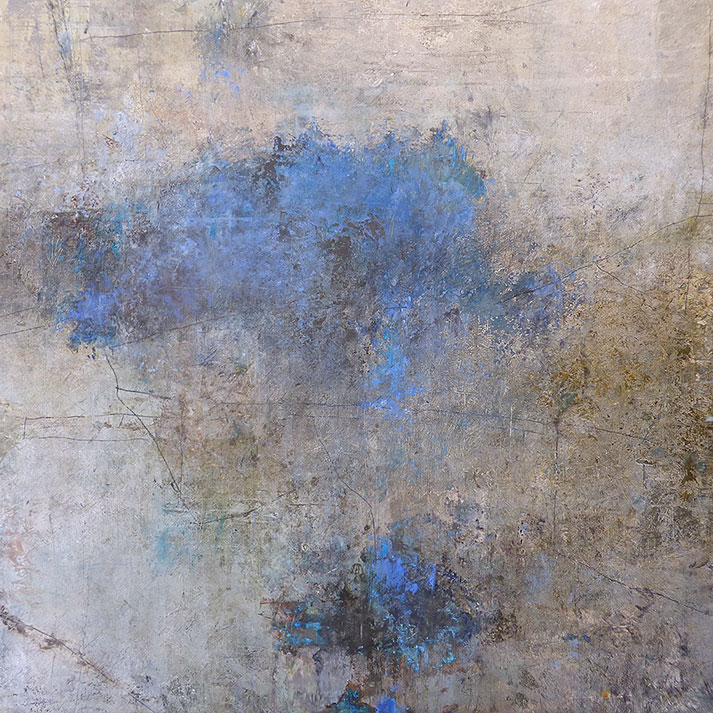
Azure
Since I first began using Cold Wax Medium 15 years ago, abstraction for me has become increasingly an expressive interaction with the materials. In mixing Cold Wax with oils, the body and the way paint can be layered, the enhanced drying time, and the transparency that it affords all lead to textures and visual depth that are the result of the process. Using Cold Wax helped me to move beyond conscious rendering of abstract ideas into a way of working that felt much deeper and more intuitive. Balancing the spontaneous aspects of my process with thoughtful editing and intention, the work has evolved into a true personal voice.
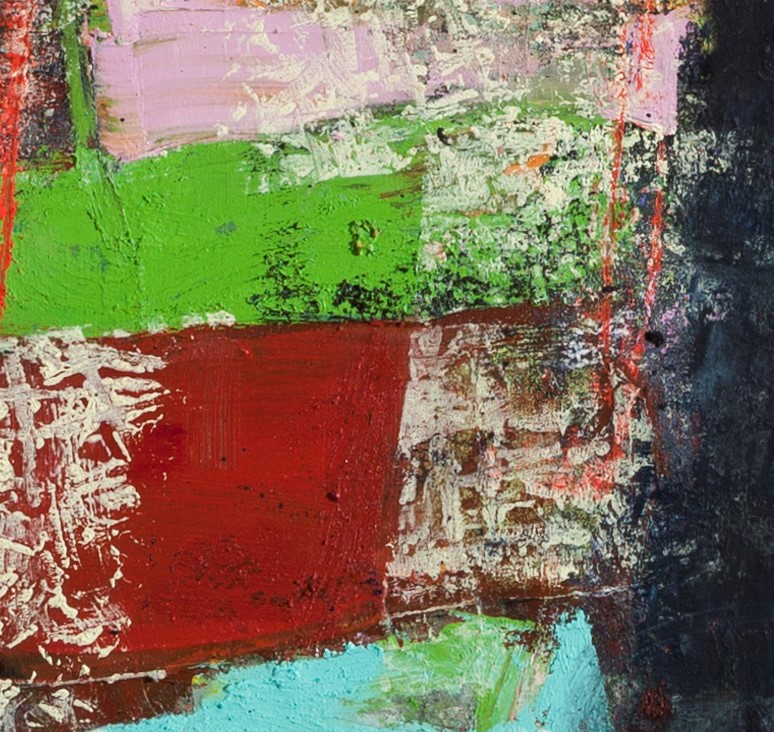
Stacking (detail)
I have been using Cold Wax and oil since the 80’s. I love how it extends the oil paint, the textural possibilities, and the way is sets up quickly to create layers.
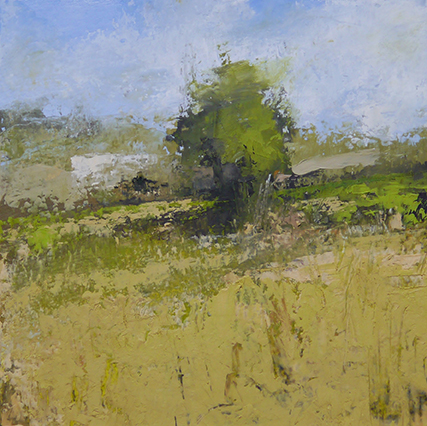
Abandoned Farm
Cold Wax Medium has allowed me to build on traditional methods of painting to work in unique ways. I use a variety of tools and techniques to scrape, scratch, rub, and add and subtract paint to the surface.
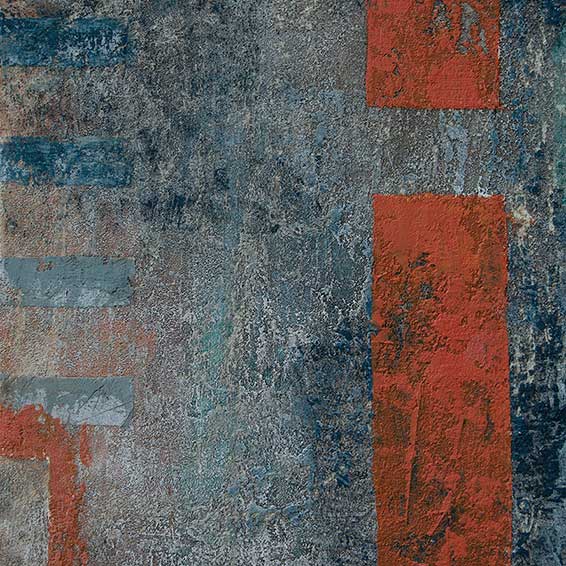
Wall, Adams Point
My painting process is centered on creating highly textured pieces by building many layers of oils colors, pigments, cold wax, and other amendments including cement, sand, soil, grit, and ash.
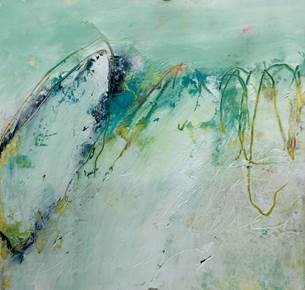
Patterns Within Music
I fell in love with the rich luminosity of oil and cold wax in 2012 and have been using it ever since. I love how cold wax medium mixed with oil paint creates interesting surfaces and texture, allowing me to scrape, push, pull, and reveal previous layers. Sometimes it feels like I’m going on an archeological dig the way I am able to excavate and scratch into the layers, yet continually add more layers in an intricate dance to conceal and reveal.
I have been painting in multiple mediums for 30 years, including encaustic, acrylic, and mixed media. Once I discovered Cold Wax Medium, it opened up new doors in the world of oil painting, with its faster drying time, increased transparency and the ability to build up texture. This medium is the best of many worlds, expanding the ability to work with oils and achieve luminous layers, quite different from all the other painting mediums I’ve tried in the past. This opens a world of new possibilities.

Feast
Cold Wax Painting is the technique I found after seeking a way to avoid the toxicity of encaustics. I could never have predicted that this creamy, hazy material could bring so much inspiration to my paintings. I feel as if I’m collaborating with a substance that has ideas of its own. I love the way Cold Wax spreads like butter on bread. It softens yet thickens colors, elevates the texture, blends well, and adds a light, painterly quality that enriches oil paints. Gamblin Cold Wax Medium and Gamblin paints have given me a freedom I never thought possible before.
The fact that using cold wax medium allows each layer to be individually preserved and accessed makes the process of building a painting akin to the process of growing and recording life experiences. The action of scratching back in or scraping delicately or using solvent techniques to reveal the history of the painting carries the excitement of following a train of spontaneous associations to discover a hidden memory. Additionally, a single color on an early layer can look different on final exposure depending on what was added on top and how much is revealed. The psychology of the finished painting is enhanced by the method of making it. How cool is that?
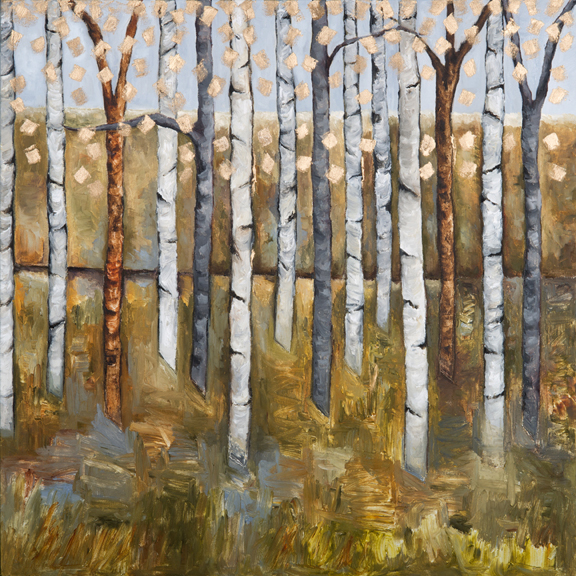
Brilliance, oil, Cold Wax and Rich Gold Metallic on canvas.
In memory of our friend, Andrea Harris.
Take me back to the Tips & Techniques menu

